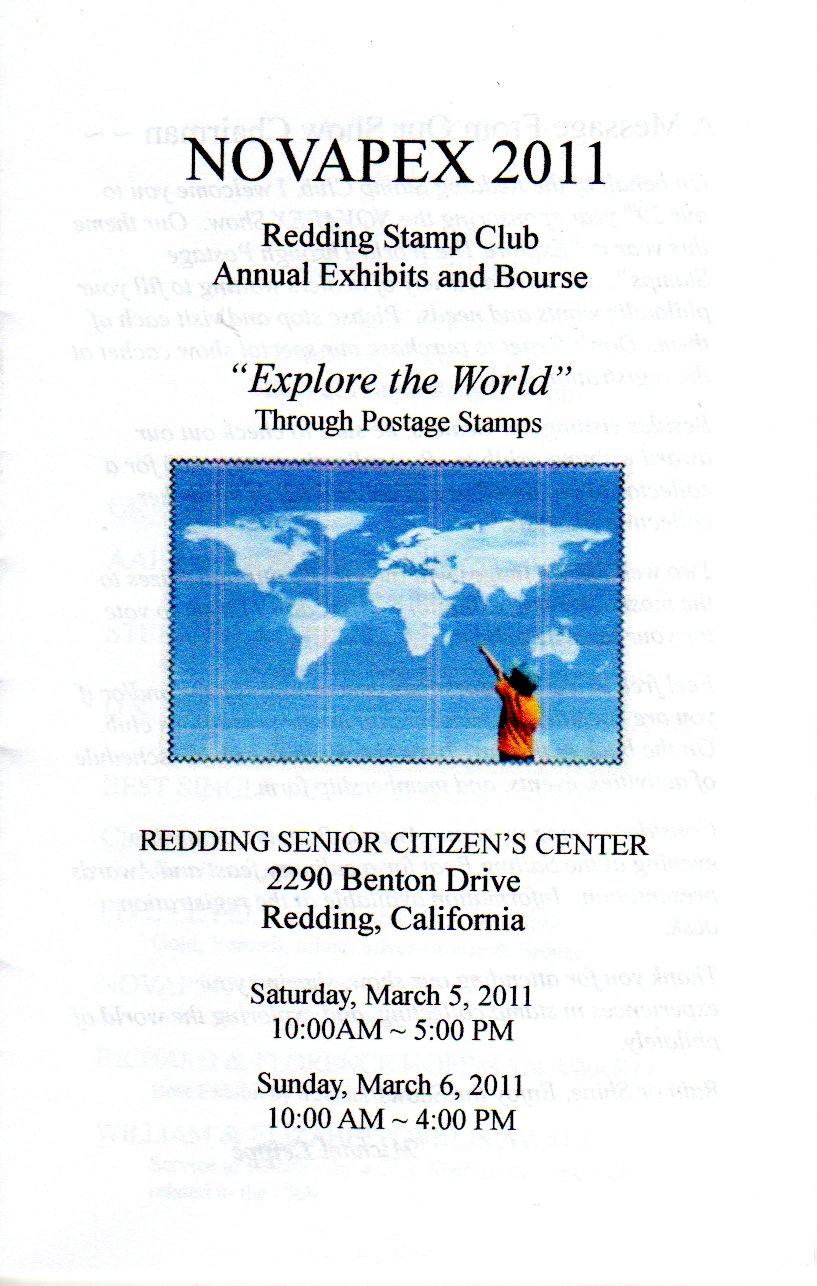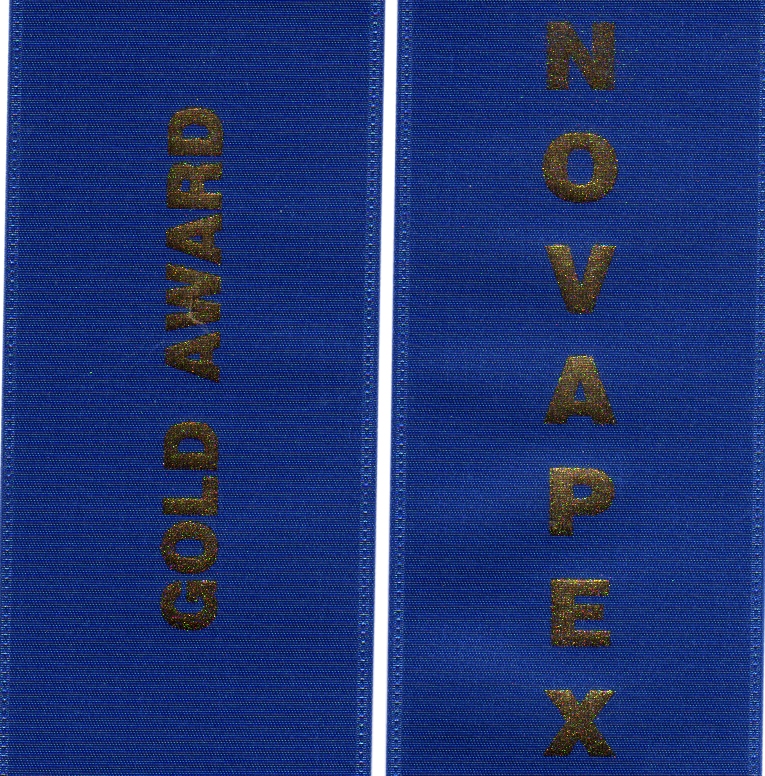Ethiopia: The 1919 Animals & Rulers
Animals & Rulers
The purpose of this exhibit is to present an overview of the 16 June 1919 Animals & Rulers definitive issue and some of the postal rates during the life of this issue. Proofs, color trials, postally used items and errors, freaks and oddities will be shown.
There were 16 stamps issued in this definitive set. The exhibit starts with the creation of the issue and is then laid out by stamp value, starting with the lowest value of 1/8 Guerche to the highest value of 10 Thaler. There are 16 Guerches to 1 Thaler. The Menelik Thaler was essentially equivalent in size and silver weight to the silver Maria Theresa Thaler. The Maria Theresa Thaler was widely used throughout the Levant as a standard medium of exchange.
In October 1904, Jean Adolphe Michel was appointed as Director of Posts. During his tenure, he produced an amazing amount of “unofficial reproductions” of the overprinted early Ethiopian stamps, in sets and on cover, that were sold for his own financial benefit to collectors worldwide. Because of this unauthorized activity, he was asked to step down from this position on 8 July 1907. He stayed in Ethiopia and produced several series of picture post cards depicting various scenes and peoples of Ethiopia. At some point after 1907, he was appointed as Chancellor of State to provide advice on post office affairs. Apparently the Ethiopian government never paid him for this service.
When the government decided to issue a new set of definitive in 1917, Michel was asked to manage their production. Through his brother, a stamp dealer in Switzerland, he arranged for the printing of this issue in Bern. Later, in 1918, he entered into a secret agreement with the Minister of Posts, Wassanie Zamanel…a 10 to 12 year old Ethiopian youth. In exchange for Michel to give up his claim of 12,000 Thalers of back wages due him by the Ethiopian government, this agreement gave him: ownership of the original plates; the right to keep and sell a sufficient quantity of genuine stamps to cover printing costs plus a ten percent commission; the unlimited right to reprint and sell these stamps after a 10 year period from their issuance in Ethiopia; and possession of six genuine cancellors that could be used to cancel these stamps. The only restriction on his sale of the genuine stamps was that they could not be brought back into Ethiopia.
Michel took full advantage of this agreement. In 1930, he contracted with the English stamp dealer Bela Sekula to produce reprints using the original plates. All manner of philatelic items were produced such as: single stamps; sheets; proofs; inverted centers; missing centers; different than issued center/frame combinations; off centered centers; double printing errors; missing frames; cancelled letters; and cancelled postcards. There was even a suit brought against Michel and Sukula for producing fakes, but it was unsuccessful since Michel was able to prove ownership of the plates and the right to reprint.
This particular era in Ethiopia’s postal history presents three very special challenges to the serious collector: (1) reprints that were produced by the same firm, in the same colors for a period of about twenty years following the original issue; (2) use of six genuine cancellors during this same period; and (3) scant documentation surrounding the details of the printing of the genuine issue. Gum is the primary factor used to identify genuine (smooth white gum with no cracking or crazing) from reprint (yellowish gum displaying any cracking or crazing).
Rarity and Difficulty of Acquisition
Color Proofs: Known in as issued colors and trial colors. No survey exists of the number of trial and as issued colors exists. Two or three references exist to various color trial combinations. Genuine color proofs exist on thin gummed paper or on gummed, thick, white, glazed paper. To be considered genuine, the proofs must have “white” gum (as described above). I have only seen proofs offered at auction 3 or 4 times over the past decade. These came onto the market a few years ago when the Swiss firm Balmer & Schwitter A.G. sold off some of their archival material.
Photo Lithographic Trial Proofs: Some composite stamps created from photographic elements pasted together are known to exist for several of the values. These came onto the market a few years ago when the Swiss firm Balmer & Schwitter A.G. sold off some of their archival material.
Imperforated Stamps: They exist in as issued trials as well as unissued trial colors. The genuine ones have white gum and none are currently known with inverted centers. Genuine ones known with missing centers and double or multiple impressions are probably printer’s waste. Genuine imperforated stamps are rare. The majority of imperforated stamps available are yellow gum reprints. The reprints exhibit all manner of errors and varieties and while not common, can occasionally be found on eBay.
Errors, Freaks & Oddities: Genuine ones must exhibit white gum and are rare. There are probably examples of printer’s waste.
“Plate Flaws”: Stamps showing plate flaws are rare and each is unique. The plate flaws are due to the presence of transient foreign matter rather than actual damage to the plates.
Traveled Covers: Traveled covers leaving Ethiopia between 1919 to 1928, are of moderate difficulty to locate. A few appear at various auctions and on eBay from time to time. The bulk of these covers are franked with 2 to 4 Guerche. Single franking using a single 6 or 8 Guerche stamp is rare. Nonphilatelic franking over 8 Guerche are very rare as most items over this amount would have been parcel post items. Due to the illiteracy in early Ethiopia, nonphilatelic internal mail is scare and rare. Imprinted mail and newspaper wrappers leaving Ethiopia during this time is also rare.
Doig, Ken (probably the most accessible as it is an excellent Internet reference)
Doig’s Ethiopia Stamp Catalog, by Ken Doig. http://doig.net/EthiHome.html.
Payne, Eric
Ethiopia Booklet No. IV, The Issues of 1917 – 1936. by Eric Payne. Cockrill Series Booklet No. 16, Philip Cockrill, Berkshire, England. 1981.
Ethiopia Booklet No. V, Postmarks & Cancellations to 1936, by Eric Payne. Cockrill Series Booklet No. 17, Philip Cockrill, Berkshire, England. 1981.
Sciaky, Roberto
Ethiopia 1867 – 1936: History, Stamps and Postal History, by Roberto Sciaky. Vaccari srl, Vignola, Italy. 1999.
Ethiopia 1867 – 1936: History, Stamps and Postal History - Addendum, by Roberto Sciaky. Vaccari srl, Vignola, Italy. 200
Award: Gold
Show: Penpex 2008
Date: 6-7 December 2008
Place: Redwood City, CA
Palmares: Penpex 2008 (Adobe PDF File)
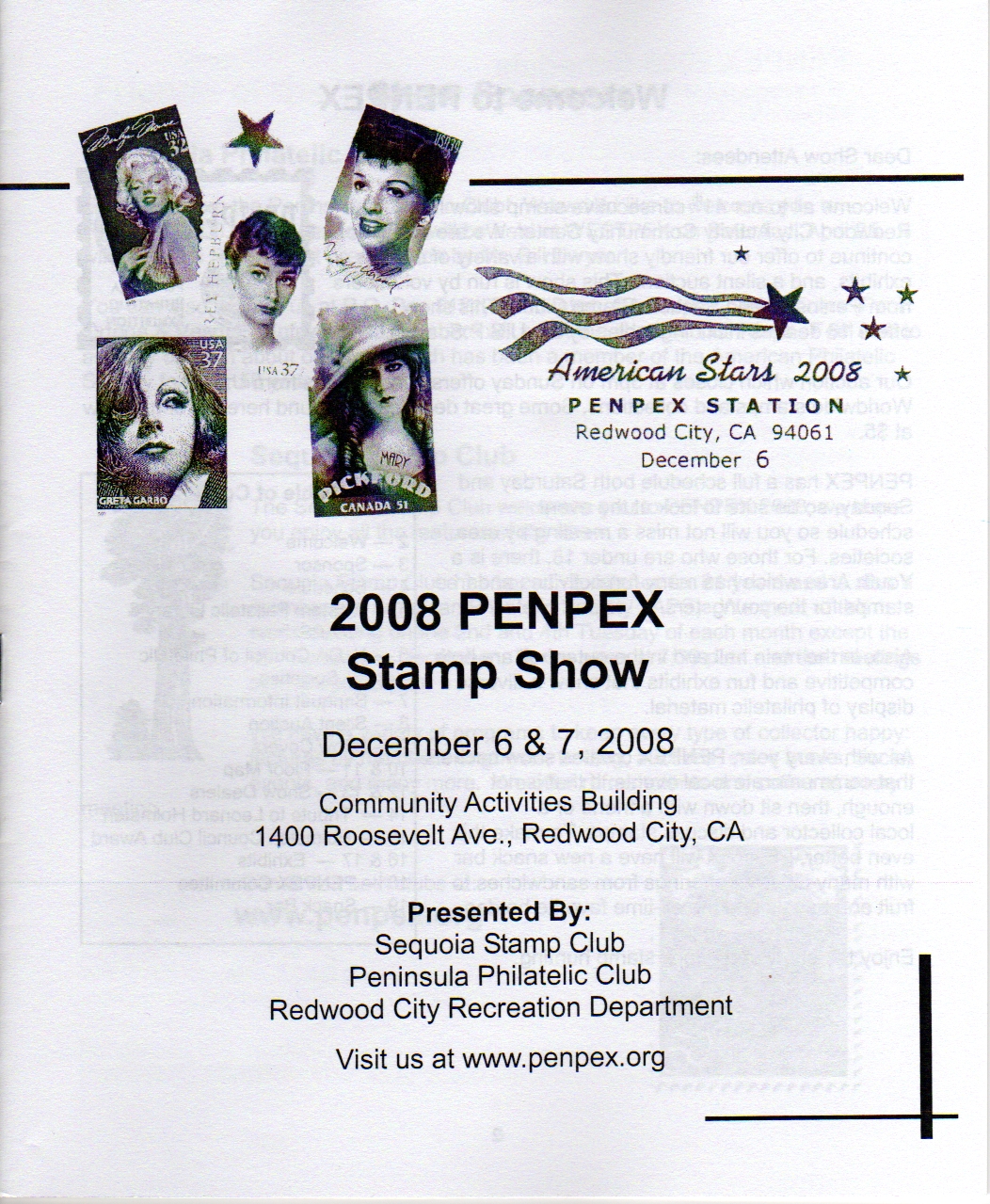
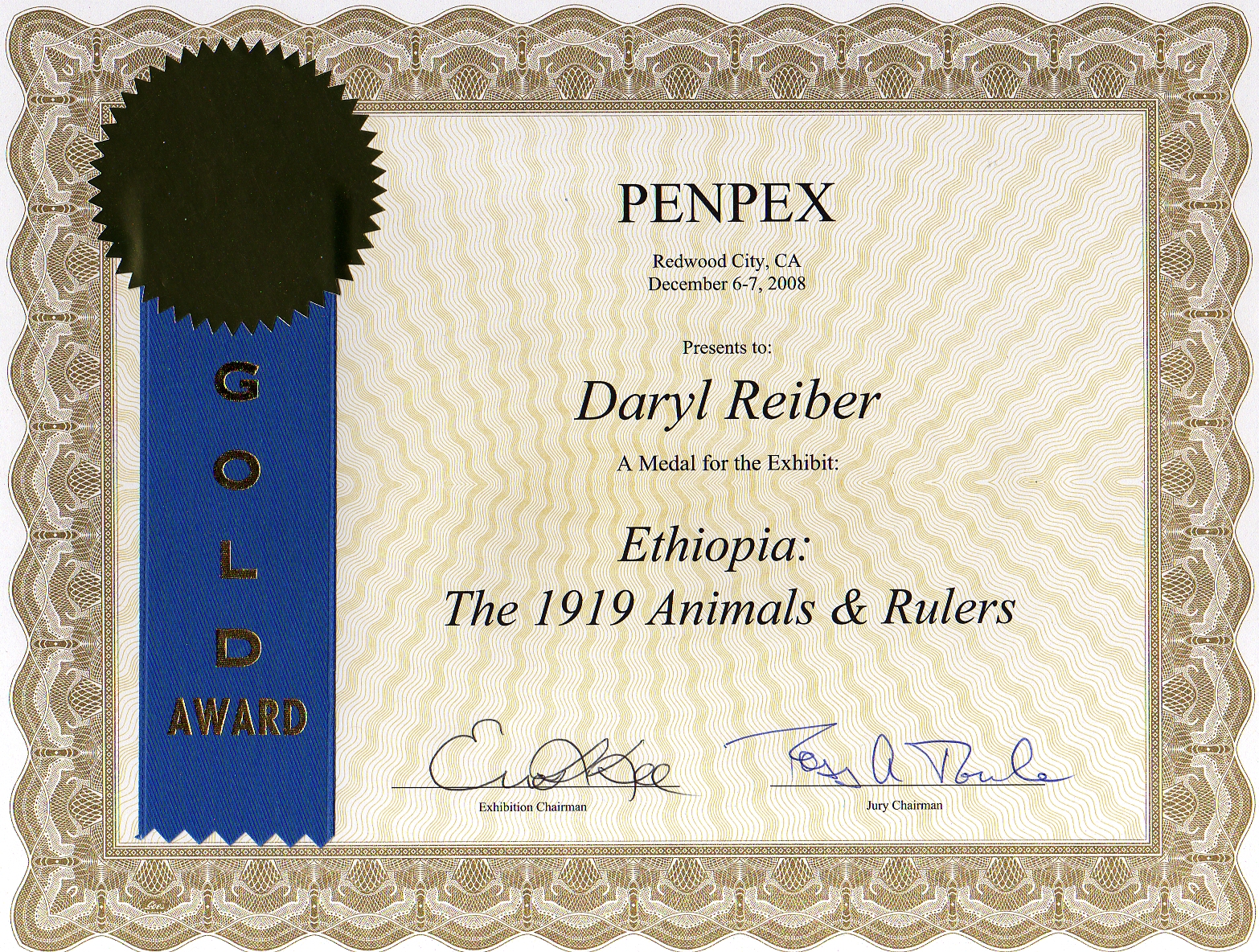

Award: Silver, Women Exhibitor's Sterling Achievement Award
Show: Filatelic Fiesta 2010
Date: 12-14 November 2010
Place: San Jose, CA
Palmares: Filatelic Fiesta 2010 (Adobe PDF File)
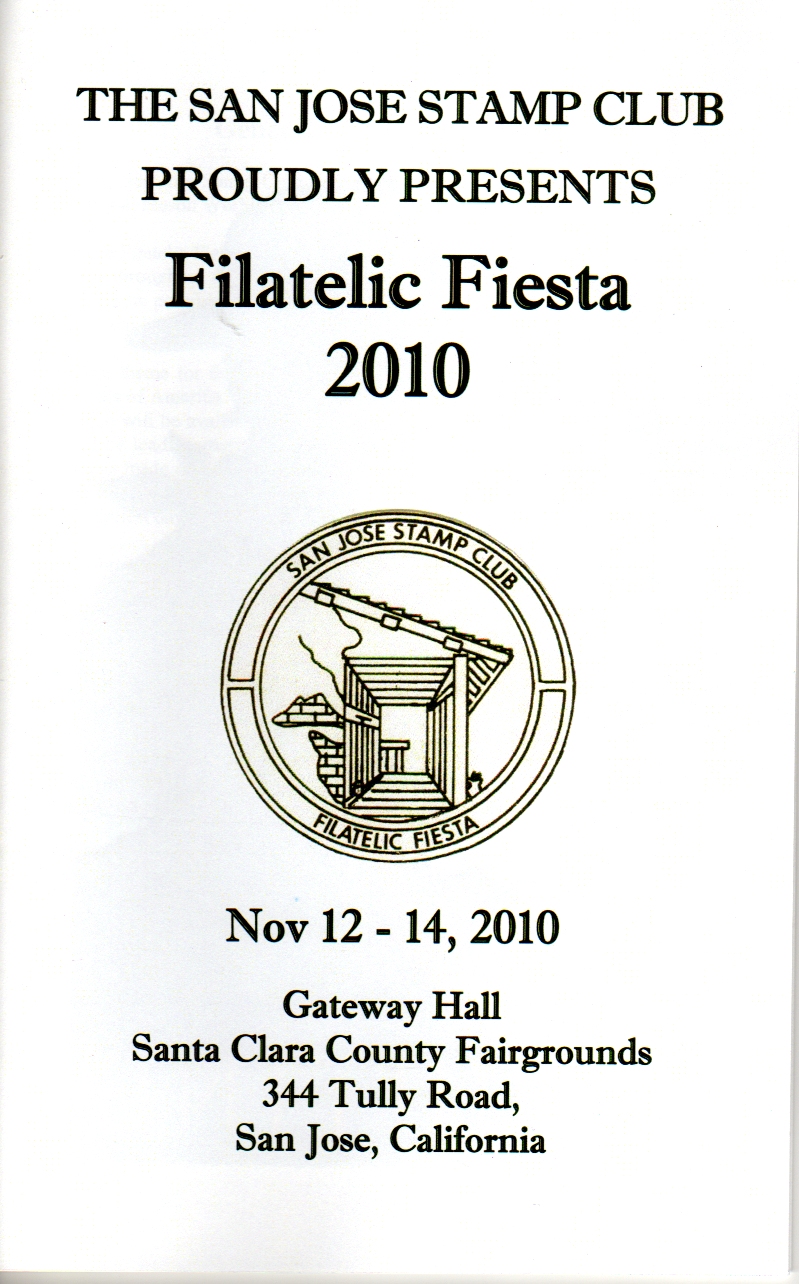

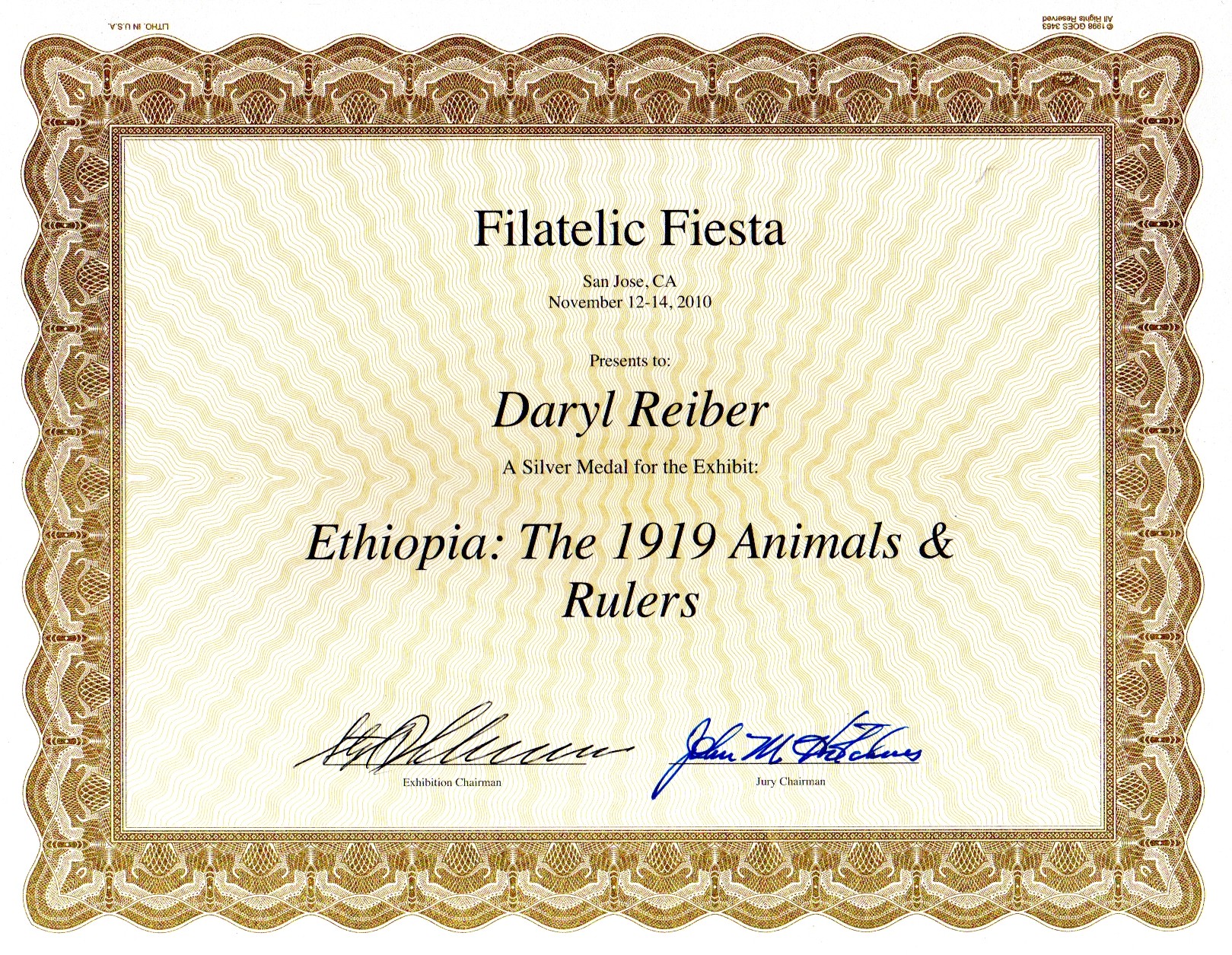

Award: Gold
Show: Novapex 2011
Date: 5-6 March 2011
Place: Redding, CA
Palmares: Novapex does not issue Palmares
\